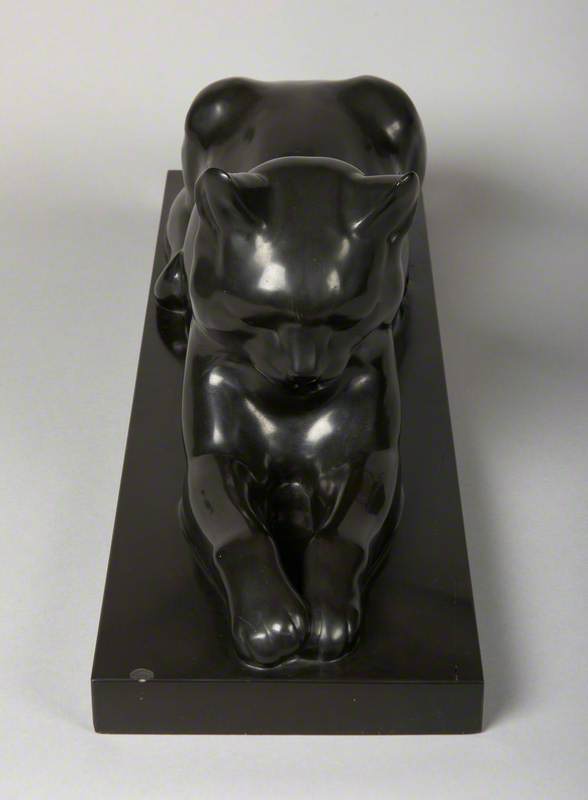
Text source: 'Artists in Britain Since 1945' by David Buckman (Art Dictionaries Ltd, part of Sansom & Company)
1879–1962
British

Text source: 'Artists in Britain Since 1945' by David Buckman (Art Dictionaries Ltd, part of Sansom & Company)
Thomas John Clapperton [also known as Thomas John Clapperton, Jnr.] was born in Galashiels, Selkirkshire, Scotland on 14 September 1879, the son of John Clapperton (.c.1856-?), a photographer. He studied at Galashiels Mechanics Institute, Glasgow School of Art (1899, 1901-03), Kennington School of Art and Royal Academy Schools in London, where, in 1905, he was awarded a gold medal and travelling scholarship.
He was a frequent exhibitor at the Royal Academy in London from 1908 to 1946. He also exhibited at the Royal Glasgow Institute of the Fine Arts; Walker Art Gallery in Liverpool; and at the Royal Scottish Academy in Edinburgh. He was elected an Associate member of Royal Society of British Sculptors in 1923, a full member of the Society in 1913, and a Fellow of the Society in 1938.
His principal works include the completion of the Mungo Park monument at Selkirk (c.1905); World War One war memorials at Earlston, Scottish Borders (1921); Canonbie, Dumfriesshire (1921); and Minto, Roxburghshire (1925); a bronze statue to commemorate the Battle of Flodden (1913); a war memorial at Oamaru, New Zealand (1926); a colossal frieze for Liberty’s store in London (1926); a statue of Robert the Bruce at The Gatehouse of Edinburgh Castle (1929); a bronze bust of Sir Walte Scott for Cornmill Square, Galashiels (1932); and the 49th West Riding Reconnaissance Memorial, Wakefield Cathedral (1947).
His address was given as 4 Scotia Street, Glasgow in 1901; Hans Studio, 43a Glebe Place, London in 1908 and 1912; 29 Cochrane Street, London in 1914; 5a Alma Square, St. John's Wood, London in 1917; 35A Acacia Road, St. Johns Wood, London in 1920 and 1926; 1 St. John's Wood Studios, Queen's Terrace, London in 1926 and 1937; 15 Gerald Road, Worthing, Sussex in 1939 and 1942; 25 Kingsway, George V Avenue, Worthing, Sussex in 1944; and 32 Salmon Street, Kingsbury, London in 1946. He died at Southlands Hospital, Shoreham-on-Sea, Sussex on 15 February 1962. His address at the time of his death was Yair Cottage, Upper Beeding, Sussex.
Text source: Art History Research net (AHR net)